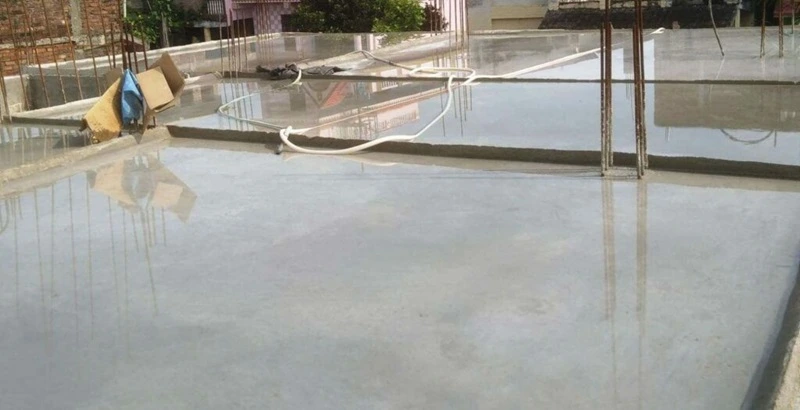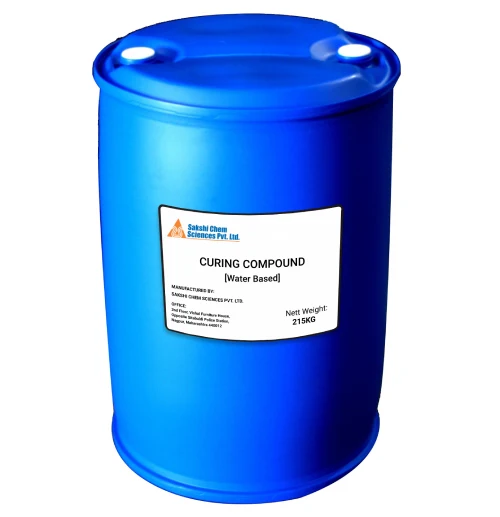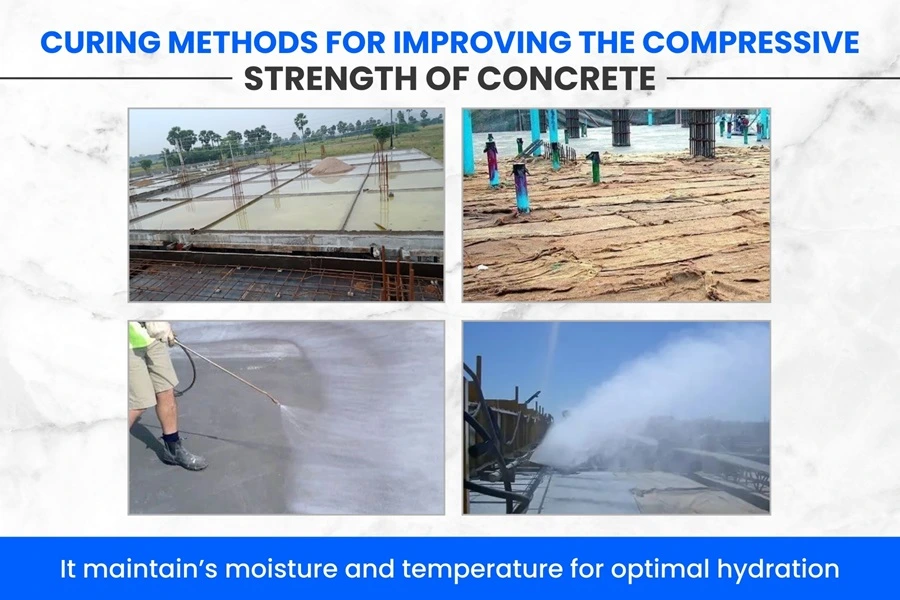Every modern construction project uses concrete as an essential part of the building process. Concrete is an integral part of modern-day construction and offers significant strength and durability to buildings of all sizes.
However, concrete can only achieve the desired level of compressive strength and long-lasting lifespan when it is cured properly.
Table of Contents
Proper curing of concrete is crucial to ensure that building structures maintain their integral strength and durability once the project is completed. To help you understand the importance of concrete curing, this article will describe in detail everything needed to know about the best concrete curing methods, including how to choose the best curing compound from renowned and reliable brands.
What is Concrete Curing?
Concrete curing is an exothermic chemical process. It involves maintaining the ideal volume of water and level of temperatures that are suitable for complete hardening of the concrete mix. This is a crucial step for ensuring that the cementitious materials in the concrete get properly hydrated.
This process helps the concrete mix to gain the necessary desired strength and durability. In this process, the water reacts with the cement particles and creates chemical bonds that sticks the aggregates to each other.
In short, concrete curing is a process that requires controlling the moisture level and mean temperatures of the concrete mix during the hydration stage.
As hydration takes significant time, it is highly advised to let the curing process go on for a considerable duration of time. This step helps the concrete to maintain the required level of compressive strength and durability.
Why is Concrete Curing Important?
Curing concrete using reliable curing compounds is extremely important. The main aim of curing concrete is to induce the chemical reaction between water and cement particles, which is known as the hydration process, or stage.
Hydration, as mentioned above, is an exothermic chemical reaction that releases significant amount of heat over a period of time. Once water is added to the cement and aggregate mix, the hydration process automatically starts.
During this stage, the water and cement particles undergo an instant chemical reaction. This reaction causes the aggregates particles to not only get dispersed uniformly all through the concrete slab, but also makes the cement particles to adhere to one another with strong chemical bonds. This entire process causes the concrete mix to dry quickly.
This swift drying of concrete is not always desirable. Hence, some curing compounds are added to the concrete mix to keep the concrete moist, so that it dries only once it has achieved its expected level of compressive and tensile strength.
However, there are several different factors that determine ideal curing of concrete, such as –
- Grade of concrete
- Specific concrete strength
- Shape and size of concrete type
- Temperature control
- Cost-efficiency
- Labor effort
- Availability of building material
- Aesthetic aspects
- On-site / Plant-based concrete production
In short, curing concrete is necessary to ensure the structure maintains its integral strength, durability so the aesthetics and inner strength are retained for a longer duration.
Curing Methods
Thanks to advances in construction technology and material development, there are several types of curing methods used for concrete in the construction industry worldwide.
Each of these concrete curing techniques are designed to suit specific regional and environmental conditions, and to fulfill individual requirements of different construction projects.
Let’s check out the most popular curing methods for concrete in use today –
Water Addition Method
The water addition method for concrete curing involves adding water frequently to the concreted surface. This is done to maintain the moisture level. Below are varying techniques to perform water addition method for curing concrete successfully –
1. Ponding
In this method, the aim is to retain the water on horizontal concrete surfaces, such as slabs, rooftops, etc. This is done by creating small borders of cement and sand that surround the concrete surface.
This method of concrete curing is perfect for hydrating flat concrete structures, such as bridges, pavements and floors. The main advantage of the ponding method for concrete curing is that it offers consistency in curing and also retains inner temperature levels.

However, ponding technique in water addition method for concrete curing requires significant quantities of water and needs constant supervision to ensure no leakage of the water occurs from the concrete surface.
Owing to these properties, the ponding technique for curing concrete is helpful when the concrete surface is subject to hot sunshine constantly. The reason is that this method prevents fluctuation in the surface temperature which may otherwise dry up the water within the concrete mix.
2. Wet Coverings
The wet covering technique under water addition method for curing concrete requires soaking cotton mats, burlap sacks, or hessian cloth in water and then placing them over freshly-laid concrete.
This type of concrete curing technique is ideal for use on small surfaces, such as beams and columns. The main advantage of using this concrete curing technique is that it helps to maintain the moisture in the concrete mix for a long period of time.
However, this technique requires frequent wetting of the coverings, especially if the construction in taking place in hot weather, or in regions with a hot climate.
Usually, the wet cover material is used along with plastic sheets. This helps to reduce the loss of water and lowers overall maintenance costs too.
3. Spraying/Fogging
The spraying or fogging curing method for concrete involves spraying the water, or creating a mist to cover the concrete surface. This technique is mostly useful for construction projects to prevent swift evaporation of water in regions with a windy or hot climate.
A major advantage of using the spraying technique under water addition method for curing concrete is that it is easiest to apply, and effectively helps avoid risk of cracks caused by shrinkage of the concrete.
However, this technique does have a small drawback. Spraying technique for hydrating concrete requires using special spraying or misting tools to cover significantly large areas, and to ensure constant availability of water.
Spraying is extremely helpful during the early phase of the curing process. it helps by preventing cracks on the concrete surface which can be caused by rapid loss of water and swift evaporation.
Water Retention Method
The second most popular type of concrete curing method is the ‘water retention method’. This technique works to prevent water evaporation from the surface of freshly-laid concrete.
Here are the various techniques you can use under the water retention method to ensure long-lasting strength and aesthetics of concrete structures –
1. Curing compounds
Curing compounds are specially designed liquid chemicals that are made to be sprayed on the surface of the concrete. This helps to cover the entire exposed concrete surface with a thin but uniform layer that ensures higher moisture retention. This is why this technique for curing concrete is mostly used in large-scale infrastructure projects, such as parking-lots, airport runways, and highways.


The main advantage of using curing compounds for hardening concrete is that they are easy to apply and do not require constant supervision. Still, the technique requires removing the layer of curing compounds before you can add more construction on the surface.
Thanks to technological advances, there are several different types and varieties of curing compounds available in the market today. For instance, you can find acrylic-based, resin-based, and wax-based curing compounds, that are designed to fulfill the varying needs of different types of construction projects.
2. Impervious sheets
Another excellent concrete curing technique under the water retention method is using sheets of polyethylene or similar impermeable material to cover the freshly-laid concrete surface. This technique is best-suited to ensure optimal curing of concrete on flat surfaces. It is also helpful to ensure idea concrete curing in areas where water is not easy to acquire for water addition methods of curing concrete.
The major advantage of using this technique is that it is easiest to apply, and helps to significantly reduce water leakage from the concrete component. However, you should ensure that the sheets are batted down firmly from all sides so as not to leave any gaps or air pockets within it.
Besides this, the technique requires taking care to avoid wrinkles on the sheet as they can affect the uniformity of concrete curing.
3. Sand/Sawdust layering
Another efficient technique for ample concrete curing is spreading moist sawdust or sand over the concrete surface to help it retain moisture. This technique is most suited for application for outdoors, such as pavements and slabs.
A major benefit of using sand or sawdust layering technique is that the method is not only cost-efficient but also effective to cover medium-to-large sized concrete surfaces. However, this technique often requires adding water to maintain the ideal moisture levels frequently.
However, this technique for curing concrete is best-suited and most effective for construction in regions with difficulty to acquire plastic sheets, or curing compounds.
Temperature Control Method
The core and surface temperatures of concrete surfaces are critical factors in curing concrete. The temperature control method, as the name suggests, works to maintain the average temperature of the concrete within the ideal range.
Below are some of the popular techniques used in temperature control method of concrete curing –
1. Insulating Covers
Insulating cover technique under temperature control method of concrete curing involves using insulated blankets or thermal covers to maintain the temperature of the concrete at a constant level. This technique is highly useful to prevent concrete from freezing in regions with a very cold climate.
A huge benefit of using this technique for curing concrete is that it ensures complete curing even in remarkably low temperatures.
However, this technique has a limitation as it involves taking care not to leave air gaps under the cover, as this can adversely affect the quality of curing. In fact, these insulated covers or thermal blankets are usually used in combination with heating cables or heaters to improve temperature control in extremely cold weather conditions.
2. Steam Curing
The steam curing technique in temperature control method for concrete curing involves speeding up the curing process but maintaining the ideal moisture levels at the same time. This technique is mostly used in manufacturing high-quality pre-cast concrete components.
The biggest advantage of this technique is its ability to accelerate inherent strength development in the concrete. This advantage is perfect for quicker completion of the construction. However, using steam curing requires acquiring special steaming tools and significant energy consumption.
Despite this limitation, the steam curing technique for concrete is highly beneficial to manufacture pre-cast elements that need higher early strength development.
Related Post: Methods of Steam Curing of Concrete and its Advantages
Conclusion
Construction professionals know the value of proper concrete curing. This process is critical for the construction materials to achieve the ideal strength and ensure long-lasting durability of buildings. You can choose to cure concrete by water retention, water addition or temperature control methods, using one of various techniques under each method.
However, it is also important to use high-quality concrete curing compounds provided by renowned brands, such as Sakshi Chem Sciences Pvt. Ltd. for the best results.
FAQS
What is the curing method?
The curing method is a process by which the inherent strength of the concrete is enhanced so as to ensure optimal durability of concrete structures.
How many types of curing are there?
There are several different types of curing methods, such as water retention, water addition, and temperature control, to name a few. Each of these curing methods is designed to fulfill the varying needs of different types of construction projects, such as residential, commercial, industrial, etc.
Which chemical is used for curing?
There are three types of chemicals that are widely used for curing concrete – namely acrylic based, hydrocarbon infused, and PVA-mixed curing chemical compounds, that are available in the market today.
What is the curing process?
The concrete curing process is an exothermic chemical process. it involves maintaining the right temperatures and water levels in the concrete mix, from the laying stage till it hardens completely. The curing process is extremely critical as it helps to ensure higher strength and long durability of concrete structures.
Sagar Telrandhe is a Construction Engineer with a B.Tech in Construction Engineering & Management. Passionate about infrastructure development, project planning, and sustainable construction, he specializes in modern construction techniques, project execution, and quality management, contributing to efficient and innovative building.

